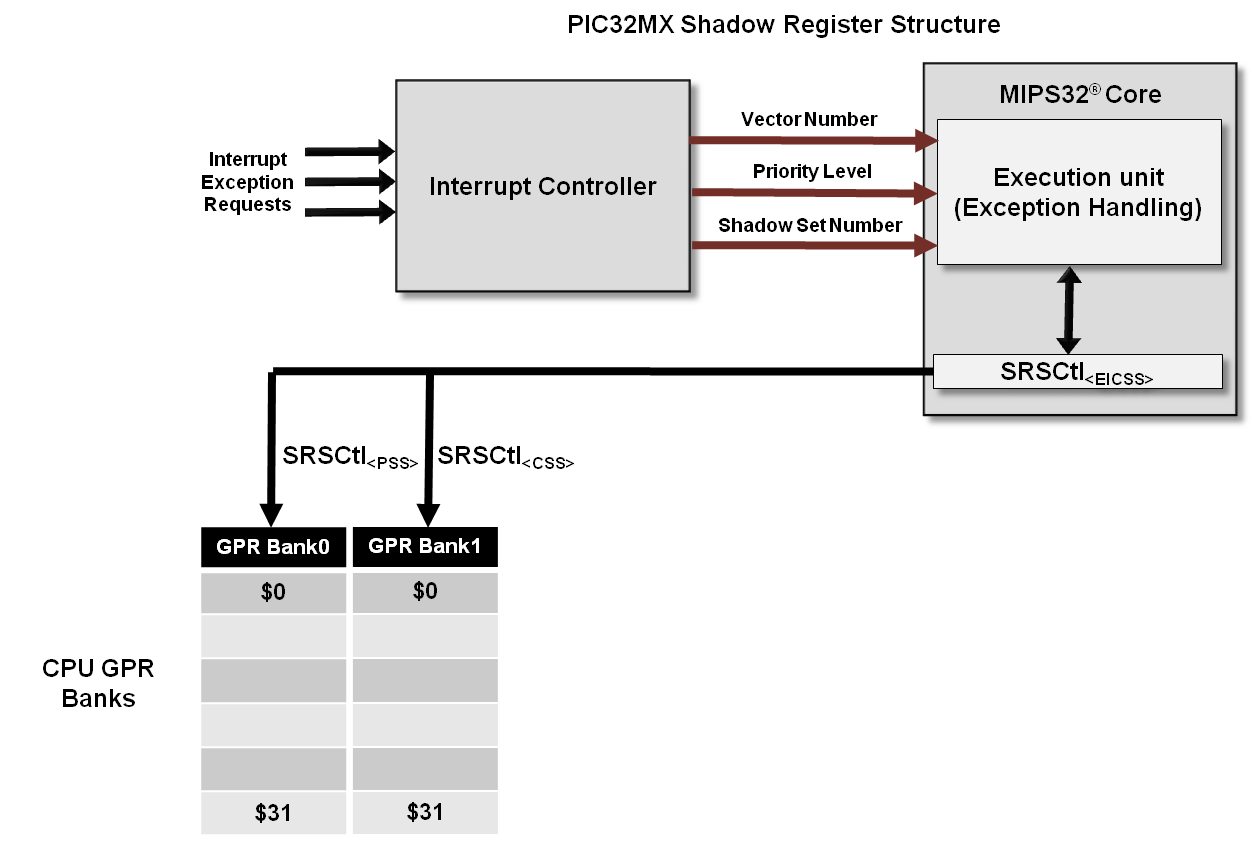
Image source: https://microchip.wdfiles.com/local--files/32bit:mx-arch-isa-cpu-shadow-registers/pic32mx-shadow-register-structure.png
Registers are the most important components of CPU. Each register performs a specific function. A brief description of most important CPU's registers and their functions are given below:
1. Memory Address Register (MAR):
This register holds the address of memory where CPU wants to read or write data. When CPU wants to store some data in the memory or reads the data from the memory, it places the address of the required memory location in the MAR.
2. Memory Buffer Register (MBR):
This register holds the contents of data or instruction read from, or written in memory. The contents of instruction placed in this register are transferred to the Instruction Register, while the contents of data are transferred to the accumulator or I/O register.
In other words you can say that this register is used to store data/instruction coming from the memory or going to the memory.
3. I/O Address Register (I/O AR):
I/O Address register is used to specify the address of a particular I/O device.
4. I/O Buffer Register (I/O I3R):
I/O Buffer Register is used for exchanging data between the I/O module and the processor.
5. Program Counter (PC)
Program Counter register is also known as Instruction Pointer Register. This register is used to store the address of the next instruction to be fetched for execution. When the instruction is fetched, the value of IP is incremented. Thus this register always points or holds the address of next instruction to be fetched.
6. Instruction Register (IR):
Once an instruction is fetched from main memory, it is stored in the Instruction Register. The control unit takes instruction from this register, decodes and executes it by sending signals to the appropriate component of computer to carry out the task.
7. Accumulator Register:
The accumulator register is located inside the ALU, It is used during arithmetic & logical operations of ALU. The control unit stores data values fetched from main memory in the accumulator for arithmetic or logical operation. This register holds the initial data to be operated upon, the intermediate results, and the final result of operation. The final result is transferred to main memory through MBR.
8. Stack Control Register:
A stack represents a set of memory blocks; the data is stored in and retrieved from these blocks in an order, i.e. First In and Last Out (FILO). The Stack Control Register is used to manage the stacks in memory. The size of this register is 2 or 4 bytes.
9. Flag Register:
The Flag register is used to indicate occurrence of a certain condition during an operation of the CPU. It is a special purpose register with size one byte or two bytes. Each bit of the flag register constitutes a flag (or alarm), such that the bit value indicates if a specified condition was encountered while executing an instruction.
For example, if zero value is put into an arithmetic register (accumulator) as a result of an arithmetic operation or a comparison, then the zero flag will be raised by the CPU. Thus, the subsequent instruction can check this flag and when a zero flag is "ON" it can take, an appropriate route in the algorithm.